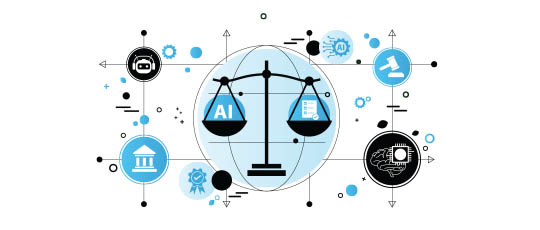- A narrowed focus. In today’s world where employees are often overloaded with information, total rewards communications may require a more personal touch, such as illustrations of how they can best utilize their benefits or suggestions on well-being programs most applicable to their family and individual circumstances.
- Improving employee well-being. The correlation between well-being and productivity is well documented, so total rewards leaders should seek to monitor well-being outcomes more closely, contribute to more reliably measuring productivity and customize programs that can drive productivity on a large scale, with a particular focus on emotional, social and financial well-being needs.
- Strengthening ESG and DEI. There is a clear opportunity for total rewards leaders to highlight how various rewards programs directly or indirectly drive ESG performance.
- Finding opportunities for improvement. Many leaders will review their total rewards operational structure and processes, looking for ways to create more scale, optimize cost, minimize friction, reduce risk and improve the quality of outcomes for employees and the business.
- Don’t get left behind. Those who continue separate strategies on compensation, benefits, well-being and career will dampen the organization’s ability to create and preserve value sustainably.
Amid new economic headwinds, the strong push by employers to invest in people in 2022 will likely shift to a more cautious undertone in 2023. Thus, with competing priorities, total rewards leaders will have to demonstrate how their investments can drive competitive value for their organizations.
The year began with elevated risk levels in the global economy. Inflation remains high in major developed markets despite having moderated from peak levels in mid-2022, and a recession appears imminent as geopolitical conflicts continue to cast a shadow on trade and supply chains.
While unemployment remains low and most sectors saw significant job growth in Q4 of 2022, some companies have announced headcount reductions after several years of aggressive hiring. The global labor market remains tight given a skills demand/supply mismatch and structural demographic shifts in major developed markets.
Medical costs are expected to increase significantly in many markets, and employers continue to feel pressure on compensation as inflation, despite a recent slowdown, still has a major impact on employees’ livelihoods. For rewards leaders, this means a greater focus on driving value creation and pressure to deliver total rewards return on investment.
WTW predicts rewards leaders will focus on five key areas in 2023.
Narrowing the Rewards Focus
Employee surveys and conjoint analyses often show a gap between the perceived value and actual cost of total rewards, which includes pay, benefits, careers and well-being.
To some extent, that could result from programmatic misalignment; the total rewards portfolio does not include programs most meaningful to employees. With economic uncertainty, evolving workforce demographics, new well-being needs and as organizations review work models (including the use of non-traditional talent), leading organizations must understand: what employees want versus what they need; how current programs are being used; and then optimize their total rewards portfolios more thoughtfully than before.
While this may not be a new phenomenon, we predict in 2023 that the approach to tailoring total rewards programs will be different. We expect to see less “wallpapering,” where programs are simply added on top of existing programs to fit the needs of various employees. Instead, leaders will take a more targeted, intentional and data-driven approach to portfolio changes, focusing on what employees need instead of reacting to their wants.
Another contributor to the gap between employee value and program cost is how total rewards offerings connect to the employee experience. Employee listening strategies provide insight into these gaps and highlight the root causes so that solutions can be more targeted.
In today’s world where employees are often overloaded with information, total rewards communications may require a more personal touch, such as illustrations of how they can best utilize their benefits or suggestions on well-being programs most applicable to their family and individual circumstances.
Enhancing Flexibility and Choice
The trend of increased flexibility and choice in total rewards will continue, but with a greater emphasis on improving the utilization and effectiveness of current programs already designed to provide flexibility and choice. Well-being needs vary based on family, life stage and individual circumstances, leaving some needs unaddressed in a one-size-fits-all total rewards portfolio. Yet many organizations already offer programs that provide some element of flexibility (e.g., ability to defer pay into a retirement account).
Organizations may have no-additional-cost opportunities to improve overall well-being outcomes and employee satisfaction by rethinking how current programs are operating, coupled with thoughtful adoption of new programs that foster flexibility and choice, such as giving employees the option to trade different benefits (e.g., new student loan and emergency savings choice opportunities in the U.S. under Secure 2.0 legislation).
Employers will also continue to build flexibility in delivering rewards to employees. For example, organizations will expand the use of key talent equity awards, temporary skills premiums and other ad hoc allowances to provide an edge in attracting and retaining key talent without locking in high payroll costs. Or they will look to bolster career growth and learning and development programs to demonstrate investment in employees’ upward mobility.
Improving Well-Being
Workforce well-being is now a C-suite and board focus, and employers will need to pay more attention to resilience. Evidence from WTW’s latest “Global Benefits Attitude Survey” shows that employees with severe anxiety or depression have more than twice the number of days lost to presenteeism and absenteeism issues versus those without anxiety or depression.
When large numbers of employees are unwell — be it emotionally, financially, socially or physically — this creates a performance vulnerability for businesses.
Productivity will be one of the most critical human capital metrics in 2023, and the connection between well-being and productivity will be put under a magnifying glass. What’s more, new well-being challenges, such as those created from remote working strategies, may amplify employers’ productivity concerns (particularly collective productivity).
The correlation between well-being and productivity is well documented, so total rewards leaders should seek to monitor well-being outcomes more closely, contribute to more reliably measuring productivity and customize programs that can drive productivity on a large scale, with a particular focus on emotional, social and financial well-being needs.
Strengthening ESG and DEI Efforts
Pushback on ESG has put pressure on companies to make environmental, social and governance (ESG) efforts more consistently tangible, meaningful and measurable.
It has led organizations and stakeholders to establish a clearer connection between ESG efforts and sustainable value creation through the adoption of a stewardship model (comprised of five elements of performance, protection, people, planet and purpose). As a result, companies have evolved and crystalized their ESG agendas and priorities, with stronger ties to their core business models and capital structures.
As companies act to bring their stewardship frameworks to life, leading employers have recognized the need to weave the ESG narrative into their talent value proposition, especially in a tight labor market.
ESG efforts have become integral to the employee experience. There is a clear opportunity for total rewards leaders to highlight how various rewards programs directly or indirectly drive ESG performance. Some examples include well-being investments, equity assessments, commuter/biking benefits, paperless communications and flexible/remote work strategies.
Where a business case is required to justify investment, total rewards leaders may find success in emphasizing how such investment will inch organizations toward their publicly stated ESG goals (e.g., workforce representation, carbon emission reduction).
Unlocking Opportunities for Improvement
Total rewards leaders will use the current environment as an opportunity to think differently and put in place mechanisms that take them from “fighting fires” to being proactive and making progress on their strategic objectives.
Many leaders will review their total rewards operational structure and processes, looking for ways to create more scale, optimize cost, minimize friction, reduce risk and improve the quality of outcomes for employees and the business. Leaders will foster more collaboration among their teams.
Total rewards leaders will ensure that the right experiences are present within their teams to carry out their priorities by rethinking how they can import more diversity of thought and skills. Rather than domain expertise, they will place value on effective communicators and analytical acumen that best understand their customer (i.e., the employee).
Fortune Favors the Bold
Times of crisis call for proactive and ambitious total rewards leaders who seek to maximize investment in total rewards to drive competitive value — to attract, retain and engage the best talent while being prudent stewards of their organization’s assets and resources.
Optimization requires all total rewards elements to move in sync toward a common objective, making integrated total rewards decision making (and a coherent total rewards strategy) mission critical.
Editor’s Note: Additional Content
For more information and resources related to this article see the pages below, which offer quick access to all WorldatWork content on these topics:







